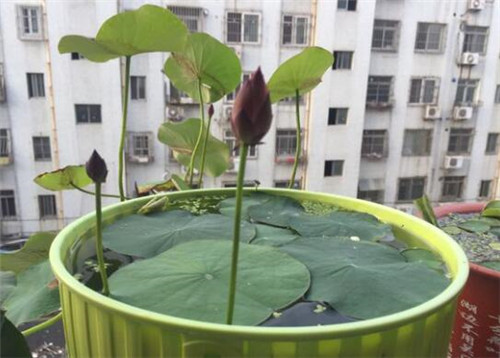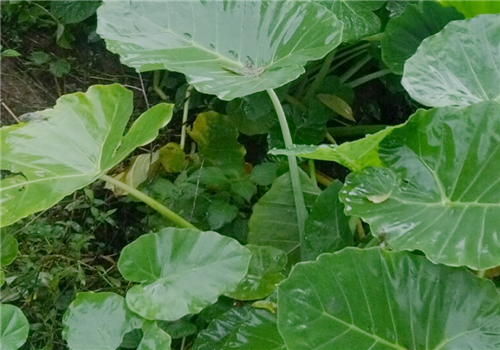How to manage peanut planting in order to achieve high yield? What kind of medicine is better for chemical control?
Peanut is an important oil crop in China, belonging to annual herbaceous plants. With the downward adjustment of corn purchase price in recent years, the planting area of peanuts in recent years is also expanding. So how can peanut cultivation be managed to produce high yields? What chemicals are better for chemical control?

1. High-yield management techniques for peanuts
1. Soil treatment: Before planting crops, deep ploughing with pears to a depth of 30-35 cm, instead of simple rotary tillage with rotary tillers, only about 15 cm. Before ploughing, spread about 40 kg of plant challenge king compound microbial fertilizer.
2. Seed treatment: peanut seeds are dried on the ground for 1-2 days before planting (not on cement ground) to improve the quality of embryos. Seed dressing agent is used before sowing to improve the emergence rate and uniformity rate, laying the foundation for high yield.
3. Selection of fertilizer: When planting fertilizer, fertilizer should choose medium nitrogen, high phosphorus and high potassium formula, and chlorine-based and sulfur-based fertilizers should be selected according to soil conditions.
Sowing requirements: When sowing, the required depth of large peanuts is 5 cm, the daily average ground temperature is stable above 14℃, and the small peanuts are stable above 12℃. When sowing, the relative water content of soil should be 70%~75%, that is, the soil in the tillage layer can be held into a group, the hand rub is loose, the moisture content is insufficient, and the soil moisture should be planted in time to protect the seedlings completely and strongly.
5. Seedling management: timely break the membrane, let the air out, check the seedlings and supplement the seedlings. After emergence, use half a catty of peanut for the first time to improve the quality of seedlings and promote the growth of leaves and roots.
6. Medium-term management: during flowering and pod-bearing period, ridge support shall be carried out, watering shall be carried out in combination with soil moisture content, and at the same time, combined with prevention and control of sheath blight and leaf spot disease, spraying half a kilogram of peanut high-yield package for the second time, controlling vigorous growth, promoting needle insertion, preventing diseases, etc.
7. Pre-harvest management: half a peanut should be watered and drained in time for the third time during the full fruit period, so as to reduce the phenomenon of shriveled grains and improve the yield.
8. Harvest requirements: 3~4 compound leaves remain on the main stem of the plant, more than 70% of the pods are hardened underground, the net is clear, and the inner wall of the pod is green and brown. After harvest, dry in time and reduce the pod moisture content to less than 8% within one week. When harvesting, we should pay attention to recycling residual film at the same time, so as to achieve net film and prevent residual film from polluting soil, environment and forage grass.
Second, what kind of chemicals are used for peanut chemical control?
Peanut chemical control has been a concern of many growers, reasonable chemical control can not only enhance peanut lodging resistance but also increase peanut yield. Paclobutrazol and chlormequat are the most widely used chemical control agents. Personally, paclobutrazol is more effective, but chlormequat is safer.
1. Chloroquine
Let's start by looking at chlormetin.
In short, chlormequat is a plant growth regulator, which can regulate the growth of plants, and chlormequat is a low-toxicity plant growth regulator, which has little damage to the environment and peanuts themselves. Chlormequat dwarfs plants by delaying cell elongation, thickening stems, promoting lateral development and inhibiting upward growth.
Increasing the chlorophyll content in the plant leaves makes the plant leaves more oily green. Increase the lodging resistance of plants and stimulate the reproductive growth of plants, that is, the growth of flowers and fruits of plants. It can also improve the resistance of plants, such as drought resistance, waterlogging resistance, disease resistance and so on. In addition, chlormequat can be degraded by enzymes in the soil, so the pollution to the environment is very low and the impact on the next crop is very small.
In addition, CCC can be soluble in water, so the CCC we buy is generally a water agent. Chlormequat use methods are also more, can be sprayed can also soak seeds and Chong Shi.
Seeing so many advantages of CCC, do you think it is also very good to choose CCC? Of course, chlormequat isn't perfect. Chlormequat inhibited cell elongation, but it had no effect on cell division, so although it had less phytotoxicity to plants, it also had some effect. The effect of paclobutrazol would be more pronounced under the same conditions.
2. Paclobutrazol
Paclobutrazol belongs to triazole plant growth regulators. As a chemical control agent, paclobutrazol also has the effect of inhibiting plant growth, shortening nodules, promoting peanut mosaic differentiation and increasing peanut resistance. Reducing peanut excess length increases lodging resistance and peanut yield. Paclobutrazol is usually purchased as a suspension agent because it is not soluble in water. And paclobutrazol is not as diverse as chlormequat, generally we are using spraying methods.
The obvious difference between chlormequat and paclobutrazol is that paclobutrazol can reduce peanut cell division, while chlormequat mentioned above can only inhibit cell elongation. It seems that the effect of paclobutrazol is obviously more violent. And paclobutrazol sterilization is more strengthened, so more suitable for peanut use.
However, the disadvantage of paclobutrazol is that although its effect is more obvious, it is easy to cause phytotoxicity to peanuts, and if the amount is not well controlled, it is very easy to cause the growth of the next crop to be affected.
Therefore, both have advantages and disadvantages, but also need growers according to their own peanut situation to make reasonable choices, want to have more obvious effect on paclobutrazol, want to be safe to use chlormequat. Another point is that peanut chemical control time must be well mastered, generally in the peanut a large number of fruit needles into the soil period is most suitable.
Time: 2019-04-06 Click:
- Prev

Planting technique of bowl lotus: can it be raised in water? When will it blossom? How can it blossom?
Bowl lotus, also known as table lotus and pot lotus, is a famous aquatic plant in Suzhou, Jiangsu Province. It is favored by flower friends because of its beautiful flowers and long leaves. At present, many flower friends like to keep it indoors to improve the indoor environment. Can that bowl of lotus be raised in water? When will it blossom? How to raise it to blossom
- Next

How many aquaculture methods are there for "sea taro" dripping Guanyin? Can you purify the air? Is it poisonous?
Dishui Guanyin is one of the green plants that we hear more but are not familiar with. Its scientific name is sea taro, and Dishui Guanyin is its merchandise name. As a large ornamental plant, Dishui Guanyin has many attractive features. So how many breeding methods are there for dripping Guanyin? Can you purify the air?
Related
- Fuxing push coffee new agricultural production and marketing class: lack of small-scale processing plants
- Jujube rice field leisure farm deep ploughing Yilan for five years to create a space for organic food and play
- Nongyu Farm-A trial of organic papaya for brave women with advanced technology
- Four points for attention in the prevention and control of diseases and insect pests of edible fungi
- How to add nutrient solution to Edible Fungi
- Is there any good way to control edible fungus mites?
- Open Inoculation Technology of Edible Fungi
- Is there any clever way to use fertilizer for edible fungus in winter?
- What agents are used to kill the pathogens of edible fungi in the mushroom shed?
- Rapid drying of Edible Fungi

